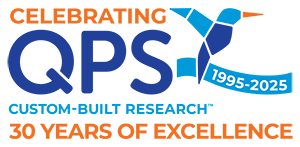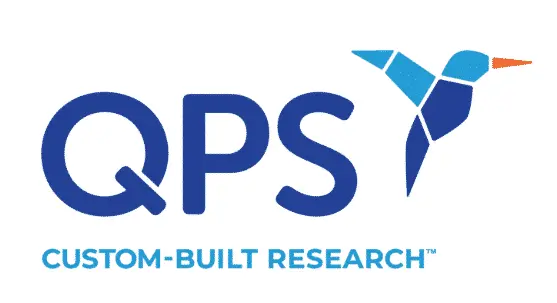Introduction
Real-world evidence (RWE) is accelerating drug development by using routinely collected patient health data, known as real-world data (RWD), to deliver insights beyond traditional clinical trials. This shift is driven by growing data availability, regulatory acceptance and the goal of reducing reliance on animal research. The application of artificial intelligence to RWE has the potential to expand clinical insights across diverse populations, optimize treatments and rapidly detect safety concerns. Coupled with rigorous regulatory standards, a data-driven integrated approach can advance the development of and increase access to therapeutic products.
Randomized controlled trials (RCTs) remain the gold standard for evaluating the safety and efficacy of therapeutic products. However, they inherently carry limitations such as selection bias, lengthy durations, high costs and limited generalizability due to narrowly defined protocols and populations. Crucially, RCTs cannot fully mirror real-world conditions and patient diversity. Fortunately, the integration of RWE into the regulatory dossier offers valuable complementary insights by capturing therapy performance in everyday clinical practice, addressing these inherent limitations.
What Is Real-World Data And Real-World Evidence?
Real-world data (RWD) is patient health and healthcare data that is routinely collected from sources such as electronic health records (EHRs), medical claims and disease registries, as well as data collected through digital health technologies including mobile apps and wearables. When this data is analyzed to produce clinical insights about a medical product’s use, benefits or risks, it becomes real-world evidence (RWE).
RWE studies use RWD to assess how therapies perform in real-life settings beyond the controlled environment of traditional clinical trials. These studies can support regulatory submissions, label expansions, reimbursement decisions and post-market safety monitoring. The US Food and Drug Administration (FDA) defines RWE as “clinical evidence about the usage and potential benefits or risks of a medical product derived from analysis of RWD.” It has numerous publications and initiatives devoted to its application in evaluating the effectiveness and safety of approved drugs and biologics.
With greater data availability and a growing demand for patient-centered healthcare, RWE is playing an increasingly important role in drug development. It helps fill evidence gaps, supports more inclusive research, reduces reliance on animal models and accelerates access to innovative therapies.
RWE Advances Drug Development
RWE is helping to accelerate drug development by expanding access to meaningful, real-life clinical insights, offering the following advantages.
Identifying New Therapeutic Opportunities
Decreasing Reliance on Animal Models
Improving Clinical Trial Design
Improving Safety Monitoring and Post-Market Surveillance
Supporting Regulatory Decision-Making
Optimizing Drug Development and Commercialization
RWE guides strategic decisions throughout the drug lifecycle, from early-stage development to market entry and beyond, by offering real-time, patient-centered insights into treatment effectiveness, market access and commercialization pathways.
Leveraging AI To Enhance RWE Studies
Artificial intelligence (AI) is shaping how RWE is generated, analyzed and applied. AI enables data extraction and harmonization from structured and unstructured data, trend analysis and the creation of powerful predictive models.
AI also enhances post-trial surveillance by continuously scanning RWD for emerging risks, automating the detection of adverse events and providing timely feedback to regulatory and clinical teams
Structured vs. Unstructured Data
RWD falls into two broad categories: structured and unstructured. Structured data is highly organized and easily searchable, including numerical lab values, diagnosis codes and medication records typically stored in tables or fields within EHRs. Unstructured data, by contrast, includes physician notes, scanned pathology reports, PDF lab results and other formats that are not easily parsed by traditional databases. Unstructured data holds immense clinical value, often containing the nuanced details of patient history, physician reasoning and treatment progression that structured fields miss.
Most healthcare data—approximately 80%—is unstructured, much of which remains underutilized. Extracting insights from this data has historically been time-consuming and labor-intensive. However, recent advances in AI, particularly natural language processing and machine learning, have changed that equation, making it possible to unlock the value of unstructured information at scale.
One promising model combines physician-led chart reviews with AI-supported analysis. Physicians bring clinical context and accuracy to data interpretation, while AI delivers speed and scalability. This hybrid approach enables richer, more nuanced datasets that reflect the complexity of patient care, boosting confidence in downstream evidence generation.
As the role of AI in harnessing RWE grows, regulatory bodies are adapting their guidelines to address emerging technologies and new data capabilities. Clear regulatory frameworks ensure that RWE derived from advanced frameworks ensure that RWE derived from advanced analytics meets rigorous standards, fostering trust and broader integration in drug development and approval processes.
Regulatory Guidelines On RWD And RWE
Reflecting increasing interest in RWE, the FDA and the European Medicines Agency (EMA) have published guidelines to ensure that high-quality data is generated and used in regulatory decision-making.
The FDA has finalized its guidance on the use of RWD and RWE to support regulatory decision-making for drug and biological products. This guidance details the agency’s guidelines for using RWD in both interventional and noninterventional (observational) studies, including how and when studies must comply with investigational new drug (IND) regulations. The document also emphasizes the need for transparency in study design, data access, safety monitoring and reporting
- For interventional studies using RWD, the FDA encourages early communication with the appropriate review division. Sponsors are expected to justify their study designs, explain data source selection, outline statistical analysis plans and ensure the FDA has access to both treatment and comparator arm data. In cases where sponsors cannot provide patient-level data directly, third parties may do so under pre-INDs or Type V drug master files.
- For observational studies, the guidance highlights the importance of publicly posting protocols, clearly describing data sources, maintaining audit trails and documenting all analyses. Transparency is important for building confidence in RWE submissions. The FDA also recommends agreements with third-party data owners to ensure patient-level data can be reviewed and verified.
Ensuring Data Integrity and Transparency
 To protect privacy and data integrity, the FDA guidance recommends that study monitoring should begin at the point of data extraction. The agency encourages sponsors to adopt a risk-based quality management approach, document deviations and ensure protocol adherence. They should also follow appropriate requirements in reporting adverse events identified during observational studies.
To protect privacy and data integrity, the FDA guidance recommends that study monitoring should begin at the point of data extraction. The agency encourages sponsors to adopt a risk-based quality management approach, document deviations and ensure protocol adherence. They should also follow appropriate requirements in reporting adverse events identified during observational studies.
Additionally, the FDA outlines specific considerations for data collected under emergency use authorizations (EUAs), clarifying that RWD generated in clinical settings under EUA conditions may be valid for generating RWE.
This guidance builds on FDA’s broader RWE framework and complements its Advancing RWE Program, which supports the use of RWD to fulfill labeling or postapproval requirements. The final guidance aims to provide sponsors with clearer regulatory pathways for leveraging real-world insights throughout the product lifecycle.
The EMA’s Real-world evidence framework to support EU regulatory decision-making is a review of RWE studies and provides recommendations on the use of RWE in support of pre-authorization and post-approval assessments by the EMA.
The UK’s National Institute for Health and Care Excellence (NICE), which encourages the use of RWD to accelerate therapeutic development, has published an RWE framework. The framework provides guidance on when RWD can be used and describes best practices for RWE studies.
Guidance and Oversight on the Use of AI
The power of AI depends on the quality of the data it analyzes. High-quality, research-ready RWD, defined by completeness, clinical relevance, standardization and timeliness, is essential to generating robust, reliable RWE.
The US FDA’s Center for Drug Evaluation and Research (CDER) has established the Center for Real-World Evidence Innovation (CCRI) to “expand, coordinate and promote” the use of RWD and RWE in regulatory decisionmaking and ensure consistency and transparency in how RWD and RWE are used.
NICE, the UK organization, has underscored AI’s potential to transform evidence generation. According to its position statement, AI methods can produce more relevant, timely and impactful guidance by automating data processing and generating novel insights. However, NICE also emphasizes the importance of transparency, trustworthiness and responsible implementation. To balance the benefits with the risks, they recommend clear guidelines on presenting AI-informed evidence and adhering to established standards.
As regulatory agencies continue to refine frameworks for RWD and RWE, addressing ongoing challenges in clinical research becomes increasingly important. While advancements in AI and regulatory standards support more effective evidence generation, significant hurdles remain, particularly regarding patient diversity and equitable access to clinical research opportunities.
Challenges And Opportunities
Realizing the full potential of RWE requires overcoming several critical challenges. Addressing gaps in representation, ensuring comprehensive and unbiased data collection and integrating diverse global insights into clinical research are key priorities moving forward.
Enhancing Diversity in Clinical Research
Unbiased Data Collection
Global RWE Collaboration
Globally, RWD also plays a key role in helping countries like Brazil, India and Russia localize regulatory decisions by supplementing global registration packages with data from their own populations. Combined with decentralized clinical trial models and microsite expansion, RWD enables more representative participation in trials and better informs personalized treatment strategies. As the industry embraces precision medicine, RWD and RWE are becoming essential to tailoring therapies to specific populations and improving drug accessibility worldwide.
These trends reflect a healthcare landscape increasingly shaped by real-world insights. They raise important opportunities and challenges as the industry strives for more representative, efficient and impactful data use.
RWE Integration Support
The future of clinical research may be defined by the ability to model and predict outcomes through robust datasets and analytical tools and reduced reliance on animal research. While implementation may take years, this signals an urgent need for CROs and sponsors to build and validate non-animal evidence models now.
Companies that lead this transformation by building compliant, data-driven alternatives early are likely to gain a competitive advantage. Organizations like QPS are poised to support this evolution through structured data collection, harmonization and analytic capabilities that replicate or enhance the predictive value of traditional preclinical and clinical models.
At the same time, regulatory trends are putting greater emphasis on the totality of evidence in submissions and increasing scrutiny of data quality. These developments demand robust systems for data integration, governance and traceability, areas where QPS is investing heavily
How QPS Can Help
We offer flexible, scalable solutions to source, structure and analyze RWD, aligning with your specific research objectives and therapeutic focus areas. Our global infrastructure includes clinical research units and over 700 partner sites across the US, Europe, Asia, Australia and India, allowing us to provide comprehensive support at every stage of the product lifecycle.
Our capabilities include:
- Data Integration and Harmonization: Integrating EHRs, pathology results, registries and genomic data into a centralized data lake environment enhanced by AI and machine learning for deeper clinical insights.
- Research-Ready Datasets: Developing customized datasets tailored to specific therapeutic areas, enabling more targeted analysis and improved decision-making.
- Real-Time Data Collection and Longitudinal Tracking: Collecting data in real time while maintaining strict adherence to global regulatory standards, including 21 CFR Part 11 and GDPR, to ensure data privacy, security and compliance.
- Streamlined Analysis and Reporting: We deliver structured data analysis, comprehensive reporting and regulatory-ready documentation to accelerate submissions and approvals.
Our therapeutic agnosticism allows for data-driven strategies across a diverse range of indications, including oncology, CNS disorders, dermatology, vaccines and rare diseases. This neutrality ensures tailored approaches to meet the specific needs of each project within evolving clinical and regulatory landscapes.
Our Expertise
Our client-first model is underpinned by a multidisciplinary team of data scientists, biostatisticians, medical writers and pharmacovigilance experts, all working seamlessly under one umbrella to deliver comprehensive project support.
- Clinical and Data Integration: Our experienced teams manage complex RWD sources, ensuring data is accurately integrated and interpreted within the clinical context.
- Global Reach and Infrastructure: Leveraging a robust global network of partner sites, research units, academic centers and technology platforms, we provide access to diverse patient populations and representative datasets.
- Lifecycle Support: From early-stage research to postmarketing surveillance and label expansions, QPS assembles the right data, analytical tools and expertise to meet evolving project demands effectively.
Our strategic combination of data science and clinical expertise, along with our investment in scalable, regulatory-compliant systems, makes QPS a trusted partner for organizations seeking to leverage RWD for real-world results.
REFERENCES
- U.S. Food and Drug Administration. (2023). Considerations for the use of real-world data and real-world evidence to support regulatory decision-making for drug and biological products, guidance for industry. U.S. Department of Health and Human Services. https://www.fda.gov/media/171667/download
- U.S. Food and Drug Administration. (2023). Real-world evidence. U.S. Department of Health and Human Services. https://www.fda. gov/science-research/science-and-research-special-topics/real-world-evidence
- Sedlakova, J., Daniore, P., Horn Wintsch, A., Wolf, M., Stanikic, M., Haag, C., et al. (2023). Challenges and best practices for digital unstructured data enrichment in health research: A systematic narrative review. PLOS Digit Health 2(10): e0000347. https://doi. org/10.1371/journal.pdig.0000347
- Cardinal Health. (2023). Improve the quality of real-world evidence with physician-led chart review. https://www.cardinalhealth.com/ content/dam/corp/web/documents/literature/cardinal-health-physician-led-chart-review.pdf
- U.S. Food and Drug Administration. (2018). Framework for FDA’s real-world evidence program. https://www.fda.gov/media/120060/ download
- U.S. Food and Drug Administration. (2024). Advancing real-world evidence program. https://www.fda.gov/drugs/developmentresources/advancing-real-world-evidence-program
- European Medicines Agency. (2023). Real-world evidence framework to support EU regulatory decision-making. https://www.ema. europa.eu/en/documents/report/real-world-evidence-framework-support-eu-regulatory-decision-making-report-experiencegained-regulator-led-studies-september-2021-february-2023_en.pdf
- National Institute for Health and Care Excellence. (2022). NICE Real-world evidence framework. https://www.nice.org.uk/corporate/ ecd9/resources/nice-realworld-evidence-framework-pdf-1124020816837
- U.S. Food and Drug Administration. (2024). CDER Center for Real-World Evidence Innovation (CCRI). https://www.fda.gov/about-fda/ center-drug-evaluation-and-research-cder/cder-center-real-world-evidence-innovation-ccri
- National Institute for Health and Care Excellence. (2024). Use of AI in evidence generation: NICE position statement. https://www. nice.org.uk/about/what-we-do/artificial-intelligence





